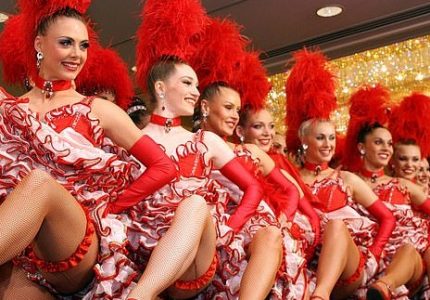Feeling confused about the spirit of Halloween and Toussaint?
Halloween and All Saints Day… two consecutive dates in the calendar can cause some confusion between cultural tradition and religion. Ever wonder if the French people celebrate these holidays? Is trick-or-treating or carving pumpkins Christian in origin? Read on for a brief explanation of the observance of these holidays in France and the United States.
I. Halloween – October 31st
Halloween, a contraction of Hallows Even or Hallows’ Evening, is Celtic in origin. Most historians believe that Halloween traditions stem from the ancient Celtic harvest festival of Samhain, which marks the beginning of the “darker” half of the year, as it relates to the seasons. Samhain was celebrated prior to 9th century AD throughout present day Ireland, Scotland, and England with bonfires that were deemed protective, and with people leaving drink and food outside of their homes. People would also dress up in disguise and wander from home to home, feasting on the treats that were left out. We can certainly see similarities between modern day trick-or-treating and the practices of Samhain!
Somewhere around 730 AD, the Christian Church, lead by Pope Gregory III made an effort to encourage all people to celebrate October 31st as the Eve of All Hallows Day (All Saints Day) and not Samhain, the pagan holiday. The Christian Church traditionally observed the eve of All Hallows Day with prayers and fasting.
In America, the celebration of Halloween is believed to have been brought with the mass immigration of Irish after the famine of 1646. Throughout the course of the past 300 years, Halloween has grown substantially and is currently estimated as a 9 billion dollar industry with over 175 million participants. Modern Halloween celebrations are vast and unavoidable. With the majority of Americans unaware of the Celtic origins of Halloween, it’s safe to say that Halloween is not religious nor pagan, but rather a cultural tradition for adults and children to dress up in costume, go trick-or-treating, carve pumpkins, and watch scary movies.
And in France?
Halloween was introduced in France during the late1990s/early 2000s as an American marketing operation. Halloween is not traditionally celebrated in France, and some say, due to the American marketing presence of huge corporations such as Disney; pumpkins, skeletons, and black cats seemingly appeared overnight as forced decoration. Culturally, this attempt to implement a non-French tradition was poorly received by the majority of French people.
By 2006, the newspaper Le Parisian wrote an article entitled Halloween est mort (Halloween is dead). Notably, some of the older generations and traditionalists find Halloween disrespectful to the real French holiday of Toussaint (All Saints Day) celebrated on November, 1st. However, among younger generations, Halloween is still perceived by some as a fun opportunity to throw parties, dress up, and decorate. For this reason, Halloween is not a simple nor uniform celebration in France. It leaves people conflicted.
II. All Saints Day/Toussaint – November 1st
All Saint’s Day or Toussaint (as it is called in France), has been a Christian tradition since the 5th century. Originally, this holiday was celebrated in the Spring during Easter and Pentecost. In the 8th century, Pope Gregory III changed the holiday to a day to honor all saints (both known and unknown) and changed the date from the Spring, to November 1st.
In America, All Saints Day is not a national holiday. For practicing Christians, November 1st is a day to remember lost loved ones, and often families visit cemeteries to clean up grave sites, light candles and leave flowers. All Saints Day is not a national holiday, and as such, work and school are in session.
In France, all French schools have a two-week holiday called Toussaint starting around October, 25th. Although the origin of this holiday is Christian, most French children do not know of the religious ceremonies and traditions, but rather associate Toussaint with a long school holiday. For those who do celebrate la Toussaint in the religious sense, the tradition is to bring chrysanthemum flowers to the graves of their deceased family members, which represents a happy after-life.
Perhaps you noticed several Catholic holidays are national holidays in France? In 1802, Napolean signed an agreement with Pope Pius to set a number of holidays based on Catholic religion as official public and non-working holidays for French people.
In summary, October 31st and November 1st are special days in both France and America. However, the ways in which each day is celebrated is vastly different between the two countries. To give you a tangible expression of these differences, let’s look at sales. In France, the amount of money spent on Halloween candy and costumes never exceeded Toussaint flower sales. In America, All Saints Day is reserved for those who are Christian, and pales in comparison to the 9 billion dollar Halloween industry in which the vast majority of people participate.


